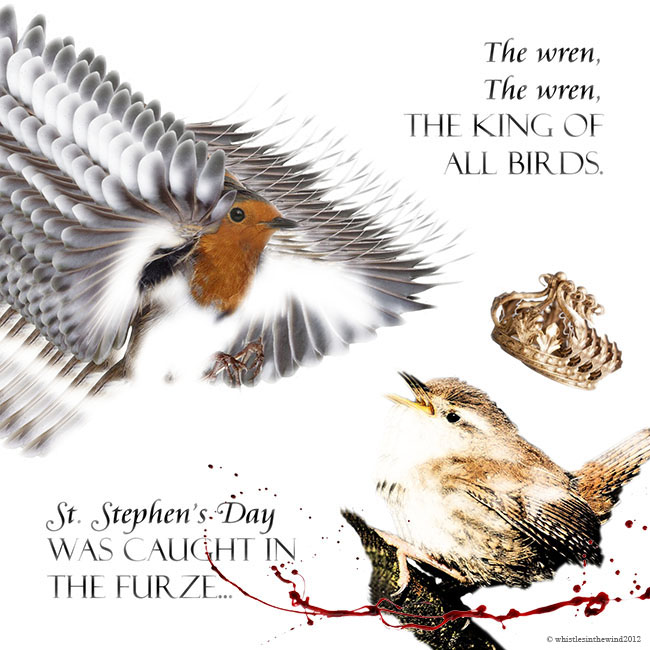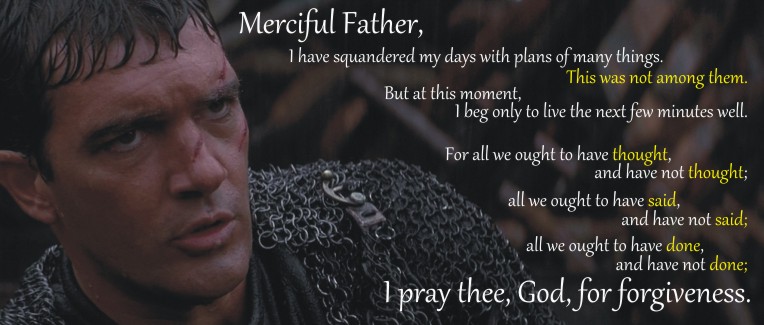Source: Saga Brief 3: Krákumál
Brewing a Viking Era Ale
During the final Ale through the Ages brewing session of the season we brewed a Scandinavian Sahti on March 4th. This recipe is inspired by the traditional style still being brewed in Finland today. This was an all-grain batch where we used Pilsner Malt, Rye Malt, Crystal Malt, as well as a small amount of specialty grains that I had previously smoked over pine and juniper boughs. Once we transferred the wort from the mash-tun to the boil kettle, juniper berries and Hallertau hop cones were added. However, one exception was made to the traditional Sahti-styles, we used a European Ale yeast to ferment the beer, rather than the normal bread yeast. This was to ensure a complete fermentation and a bit more carbonation than the usually less carbonated Sahti’s of Finland. Our specific gravity prior to pitching the yeast was 1.072, so, we should expect this sahti…
View original post 710 more words
The battle of the robin and the wren
There’s a lot of fascinating folklore around the robin and the wren. At the winter solstice, the Holly King is driven away and the Oak King takes his place until the summer. Similarly, I have read that the robin rules once the wren is vanquished in December.
Jean Harrowven writes in her book Origins of Rhymes and Sayings that ‘Who Killed Cock Robin?’ is about King William Rufus, killed in the New Forest by an arrow, citing his red hair or the blood on his breast as explanation.
There is also a poem by John Webster, as stark and beautiful as you would expect…
Call for the robin-redbreast and the wren,
Since o’er shady groves they hover
And with leaves and flowers do cover
The friendless bodies of unburied men.
Call unto his funeral dole
The ant, the field-mouse, and the mole
To rear him hillocks that shall keep him…
View original post 29 more words
Sheep and Goats in Norse Myth and Life
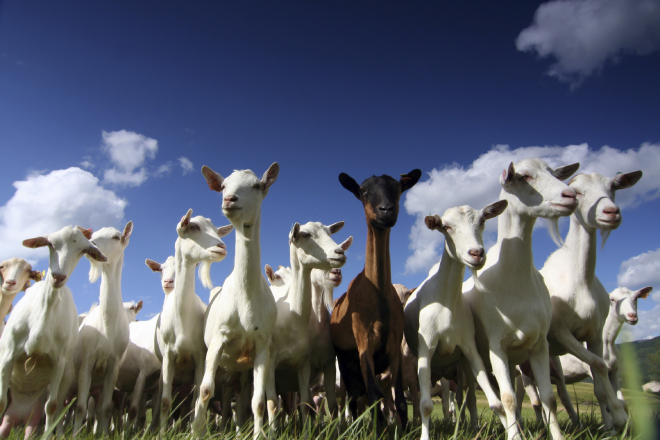 Sheep and goats were both common food animals during the Iron Age, although oddly enough there are no images of sheep from the pre-Christian period. There aren’t a lot of goats, either, but there are a few among the rock carvings on the west coast of Sweden and the east central part. Another, well-known, image is of a goat is from a golden horn from Gallehus in Denmark. The actual horn was stolen and melted down, but luckily there are drawings of the decoration on the horn.
Sheep and goats were both common food animals during the Iron Age, although oddly enough there are no images of sheep from the pre-Christian period. There aren’t a lot of goats, either, but there are a few among the rock carvings on the west coast of Sweden and the east central part. Another, well-known, image is of a goat is from a golden horn from Gallehus in Denmark. The actual horn was stolen and melted down, but luckily there are drawings of the decoration on the horn.
Some of the imagery is quite odd, including the three-headed man. He stands above an animal that is definitely a goat. Another image on a gold bractate may or may not be a goat; the horns could also be the pricked ears of a horse. The animals on the bractates are stylized, and often composed of bits of different animals, like heraldic ones…
View original post 1,097 more words
The Holly King
Since tomorrow is Christmas Day, I thought I’d mention a figure from folklore who is often seen as an early inspiration for Santa Claus – the Holly King. Often, these two entities are portrayed in similar ways – the Holly King frequently appears dressed in red, wearing a sprig of holly in his tangled hair, and is sometimes depicted driving a team of eight stags – a sort of woodsy version of Santa Claus if you like. The Holly King was popularised in The White Goddess, a book-length essay on the nature of poetic myth-making by author and poet Robert Graves. In his book Graves proposed that the mythic archetype of the Holly King represented one half of the year, while the other was personified by his counterpart/adversary the Oak King. The two figures battle endlessly as the seasons turn: at Midsummer the Oak King is at the height of his strength, while the Holly King is at…
View original post 725 more words
The Holly and the Ivy: Battle of the Sexes Preserved In Song
I’m fascinated by the ancient origins of various holiday traditions, and occasionally go in search of their roots by way of a good, old fashioned Google search. Today I had an additional motivating factor: I was searching for the perfect names for two special characters in my latest story. I’ve decided to name them Holly and Ivy, for they are the perfect opposites, yin and yang.
What follows is an abridged version of The Holly and the Ivy, Meaning Behind a Curious Christmas Carol by David Beaulieu. The tale of this song’s origins is a fascinating and convoluted blend of Paganism and Christianity, with religious overtones masking its more esoteric meaning.
“Those of you familiar with “The Holly and the Ivy” have perhaps puzzled over the meaning behind this old (17th-18th century) Christmas carol. Before we get to the lyrics of “The Holly and the Ivy,” let’s back up a bit…
View original post 1,024 more words
Vikings – An Archaeodeath Review of Death in Season 1
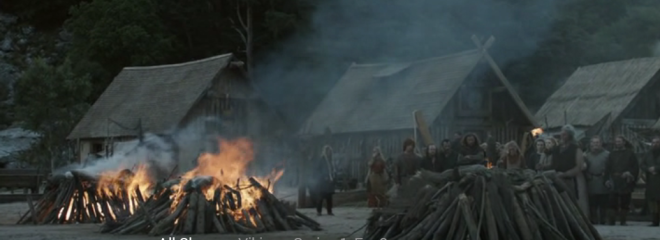 Cremation at Kattegate, season 1, episode 9 of ‘Vikings’
Cremation at Kattegate, season 1, episode 9 of ‘Vikings’
In a previous blog I discussed the television series Vikings seasons 1 and 2. Here I focus on death, burial and commemoration in Season 1.
There is a lot of death in this first series as you might expect, mostly killings: battles on different scales between and within different groups of Vikings and involving Vikings and others, mainly Anglo-Saxons but also with an unnamed Baltic tribe (at the opening of episode 1). There are also individual murders, executions and examples of gruesome one-sided slaughters of unarmed men, women and children (and monks). Disease makes an appearance but old-age and accidents make no intervention in the narrative.
Some of these deaths lead to funerals in different locales, on varying scales and in contrasting character. It is interesting to me as an archaeologist how the disposal of the dead is portrayed in this popular series – both funerals and instances…
View original post 2,824 more words
INTERESTING! Tollund Man and Haraldskær Woman
Preparations
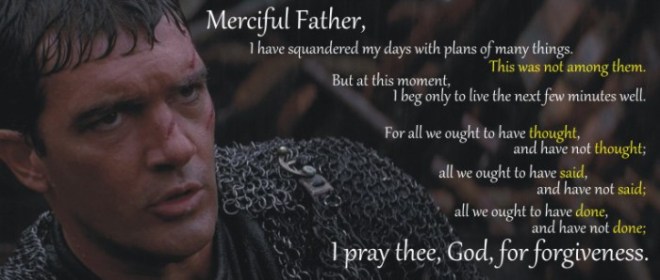 Advent 2B Isaiah 40:1-11 2 Peter3:8-15a Mark 1:1-8
Advent 2B Isaiah 40:1-11 2 Peter3:8-15a Mark 1:1-8
Prepare the way of the Lord! Prepare!
What on earth does that mean? I feel like we should all be scrambling around making something or cleaning something, but I’m not sure what.
Every time I hear that word “prepare” associated with the church, I think about a scene from a movie called the Thirteenth Warrior. Through a complicated set of circumstances, a young man from an Arabic royal court is traveling with a band of Viking warriors. This young man has never even been close to a weapon, much less a battle because he was a poet who spent his life in royal culture. But the story finds him in the middle of foreign lands with these seasoned warriors and a wild, fierce enemy about to attack. One of the Vikings looks at the young poet and says, “Prepare yourself.” The look…
View original post 1,359 more words
Vikings, Warrior’s Fate: It’s so much more than just a bath!
Before we deal with the darker sides of the Warrior’s Fate, namely battle and it’s aftermath… I think we need a few moments of amusement, entertainment and ohhh yes, let’s do spend some time in that Roman tub with Ecbert, Lagertha, Athelstan… and a rather reluctant Judith. Let’s also catch a glimpse of Athelstan’s well hidden finer assets…
I do want to warn and advise ahead of time that this post contains some partial nudity, minor sexual contact and explicitness. The clips are from a scene that was deleted for American viewers. I give credit to George-blagden.net for providing the deleted scene so all of us can enjoy it! You can view the scene here: http://george-blagden.net/post/112924714611. I have pulled the stills out of it for our purposes and enjoyment!
In our previous discussion, we talked of Ecbert, his games of strategy and his pawns in this power game. I did…
View original post 1,878 more words

